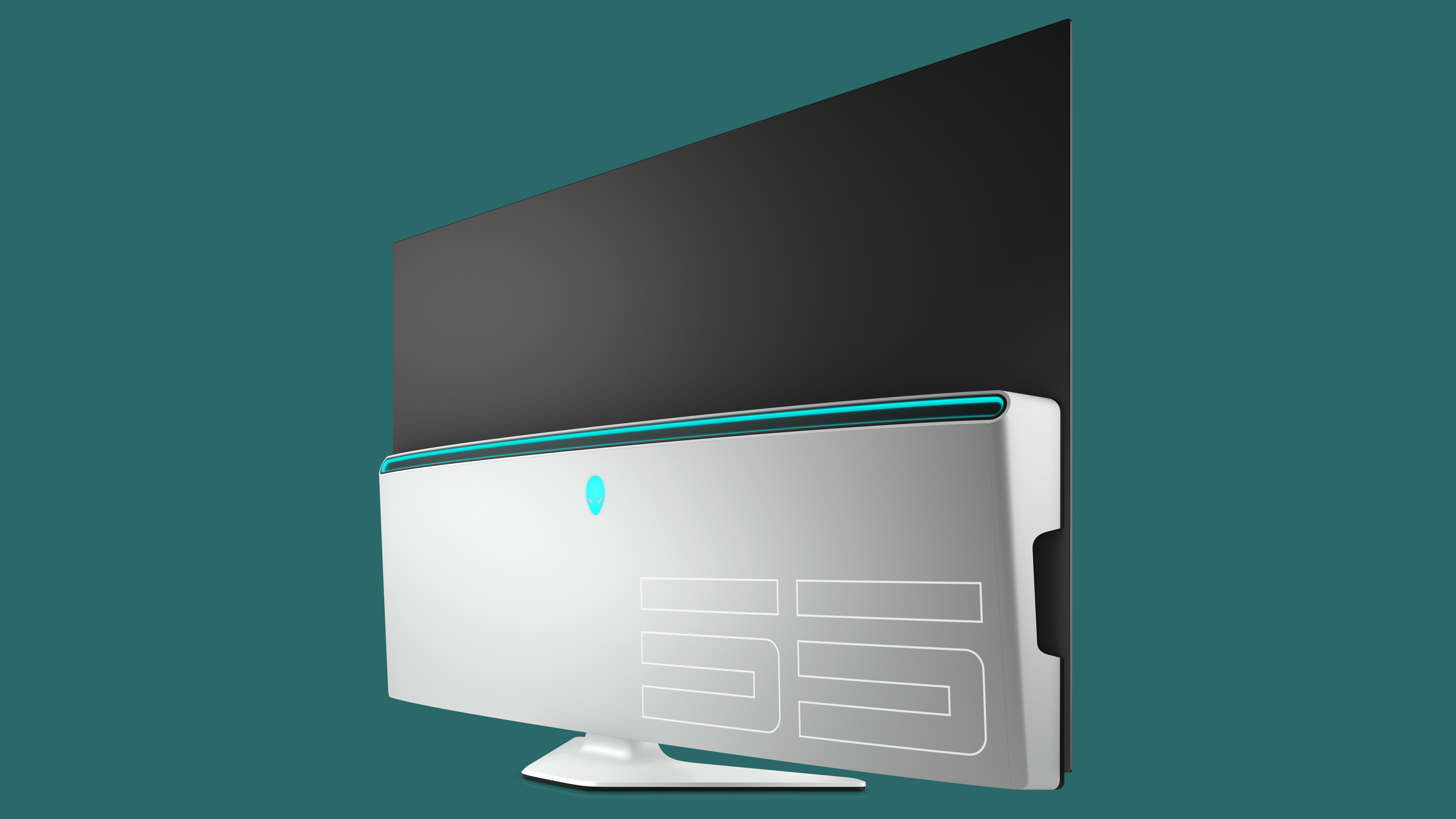Alienware has made a $4,000 OLED gaming TV to dominate your living room
But would you want it to?

We love Alienware’s gaming kit – the company does some very enticing gaming laptops and peripherals – but its latest monitor, a 55-inch OLED behemoth, is quite possibly its most ambitious creation.
The Alienware 55 OLED Gaming Monitor features a 120Hz refresh rate and AMD FreeSync support, making it capable of silky smooth gameplay at ultra high resolutions – as long as you have the hardware for it.
- The best gaming monitor 2019
- Dolby Vision: the new HDR format for home TVs
- HDR10+: the new HDR standard that's taking a leaf out of Dolby's book
It features a DisplayPort 1.2 port, three HDMI 2.0 ports, four USB ports, a headphone jack, and SPDIF audio – but note the lack of HDMI 2.1. This means you can’t use HDMI to display 4K video at 120Hz, so you’ll have to rely on the DisplayPort.
That’s not much of an issue for PC gamers, but it might cause issues if the PS5 and Xbox Project Scarlett are able to output those kind of numbers, which some rumors suggest they will.
It also comes with a response time of 0.5 milliseconds (gray-to-gray) and a remote control, hinting that this is a monitor better suited to front rooms than on a desk in a home office.
However, while there’s a lot to lust over here, there’s some noticeable drawbacks as well. For a start, it doesn’t support HDR (High Dynamic Range), which for an expensive modern TV is pretty unforgivable.
Also the price will instantly put people off – as it’ll go on sale for $4,000 (around £3,200, AU$6,000) when it launches on September 30.
Sign up for breaking news, reviews, opinion, top tech deals, and more.
Big competition
Alienware isn’t the first monitor company to make a super-large screen that blurs the line between monitor and TV. The likes of HP, Acer and Asus have released their Big Format Gaming Display (BFGD) screens, which dwarf the Alienware 55 OLED when it comes to size (they are 65-inches) and specs (they support both HDR and Nvidia’s G-Sync technology).
However, one area that the Alienware 55 OLED does beat them is it’s OLED display – none of the other large monitors boast this. It can lead to much deeper blacks and better color reproduction, and goes a little way to making up for the lack of HDR.
However, if you’re looking for a TV that includes HDR, 4K and OLED, then you can get some much more sensibly priced TVs out there. But, if you’re one of a handful of PC gamers that wants to play in 4K at 120Hz from your couch, then you’d better get saving.

Matt is TechRadar's Managing Editor for Core Tech, looking after computing and mobile technology. Having written for a number of publications such as PC Plus, PC Format, T3 and Linux Format, there's no aspect of technology that Matt isn't passionate about, especially computing and PC gaming. He’s personally reviewed and used most of the laptops in our best laptops guide - and since joining TechRadar in 2014, he's reviewed over 250 laptops and computing accessories personally.